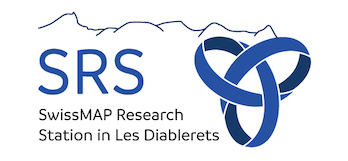Speaker
Description
Magic-Angle Twisted Bilayer Graphene is shown to host a large variety of interesting states of matter, including an unconventional superconducting state.
But could this material form completely new states of matter?
In this talk, I will discuss the possible emergence of two different types of electron condensates that go beyond the BCS coupling paradigm. These are condensates formed by fermionic quadruplets exhibiting no phase coherence between pairs of electrons, but between pairs of pairs.
By employing large-scale Monte Carlo simulations on a low-energy effective model [1] for magic-angle twisted-bilayer graphene, we show that depending on the superconducting ground state, fermion quadrupling condensates may emerge as vestigial phases.
More specifically, we find that if the ground state is a superconductor additionally breaking time-reversal symmetry, a condensate formed by four electrons which breaks time-reversal symmetry generically emerges above the superconducting transition [2]. Conversely, if the ground state is a nematic superconductor, our numerical simulations show that the system exhibits a charge-4e phase before melting in the normal metal phase [3].
This indicates that twisted bilayer graphene is an ideal platform to stabilise and observe these novel quantum states.
[1] D. V. Chichinadze, L.Classen, and A. V. Chubukov Phys. Rev. B 101, 224513 (2020);
[2] I. Maccari, J. Carlström, E. Babaev, Phys. Rev. B 107 (6), 064501 (2023).
[3] I. Maccari, J. Carlström, E. Babaev, In Preparation.

